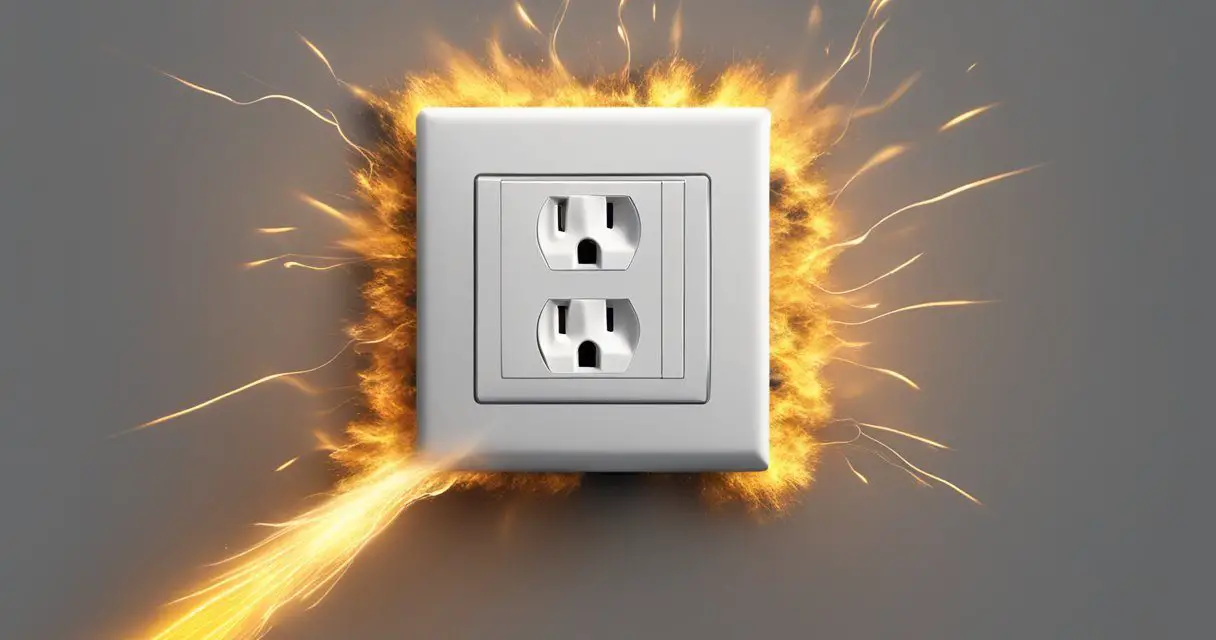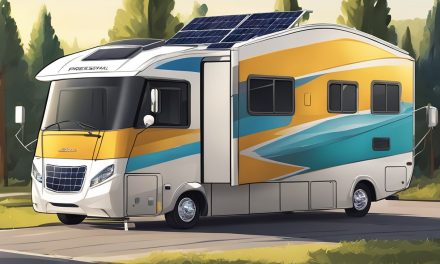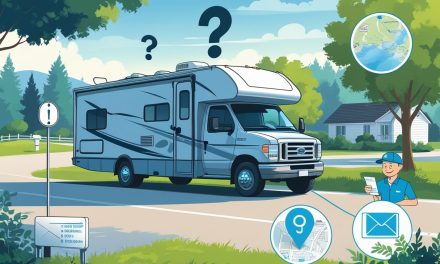Would you like to save this article?
Navigating the electrical setup in an RV can be daunting, especially for newcomers to the RV lifestyle. Whether you’re dealing with inverters, power cords, or extension cables, understanding the intricacies of RV electrical systems is crucial for a smooth and safe journey. We found a great video from the National RV Training Academy that dives deep into some common RV electrical questions. Below in the article are the highlights from this informative video, and make sure to watch the entire video at the bottom of the article to get the full scoop!
1. Balancing Power on a 50 Amp Service
The first question tackles the issue of balancing power on a 50 amp service RV. The viewer wants to power their absorption fridge using an inverter without running the gas generator.
The expert suggests, “The best thing to do is find out if you have a sub panel and if there’s a way to redirect the circuit.” This advice is solid, but let’s be honest, if you’re not careful, you might end up with a fridge that only cools your beer halfway. And nobody wants lukewarm beer on the road!
1. Balancing Power on a 50 Amp Service
The first question tackles the issue of balancing power on a 50 amp service RV. The viewer wants to power their absorption fridge using an inverter without running the gas generator. The expert suggests checking if there’s a sub panel available and seeing if it’s possible to reroute the circuit for the refrigerator to this sub panel. Alternatively, if there’s an outlet powered by the inverter, using an extension cord to connect the fridge to this outlet could be a practical solution.
Balancing power in an RV is crucial because improper distribution can lead to overloading circuits, tripping breakers, and potentially causing damage to electrical components. By ensuring that the refrigerator is connected to a reliable power source, you can maintain its efficiency and avoid unnecessary generator use. However, it’s essential to follow safety guidelines and consult with a professional if you’re unsure about making these adjustments yourself. This advice is solid, but let’s be honest, if you’re not careful, you might end up with a fridge that only cools your beer halfway. And nobody wants lukewarm beer on the road!
2. Using a 15 Amp Reducer Puck
Another viewer asks about the safety of plugging a 30 amp power cord into a garage outlet using a 15 amp reducer puck. The expert explains that if the garage outlet is protected by a GFCI, plugging in the RV might cause the outlet to trip immediately. To use it safely, it’s important to limit the electrical load on the 15 amp outlet.
Using a 15 amp reducer puck can be convenient for short-term power needs, such as charging batteries or running low-wattage appliances. However, it’s crucial to understand the limitations of this setup. Overloading a 15 amp outlet can lead to overheating, tripping breakers, and even potential fire hazards. Always check the electrical load of the devices you plan to use and ensure they don’t exceed the outlet’s capacity. In other words, prepare for a light show in your garage. Just don’t invite the neighbors over to watch unless you want to become the talk of the town.
3. Using Extension Cords with High-Wattage Appliances
The final question involves using a 14 or 12 gauge extension cord to power multiple high-wattage appliances. The expert advises that using a thinner gauge extension cord can limit the amount of electricity you can safely use. For instance, a 12 gauge cable is suitable for up to 20 amps, while a 10 gauge cable can handle up to 30 amps. For safety, it’s best to use the 30 amp power cord and plug into a proper 30 amp outlet, especially if you’re running several high-wattage devices simultaneously.
Using the correct gauge extension cord is essential to prevent voltage drops, overheating, and potential electrical fires. High-wattage appliances, such as space heaters, microwaves, and air conditioners, draw significant power and require appropriate cabling to operate safely. When in doubt, always opt for a heavier gauge extension cord or use the dedicated 30 amp power cord that came with your RV. This is a classic case of “size matters.” So, unless you want your extension cord to turn into a Christmas tree light show, stick to the recommended 30 amp power cord.
4. Understanding Inverter and Converter Differences
Another common question revolves around the differences between inverters and converters in an RV electrical system. An inverter converts DC power from the RV’s batteries to AC power, allowing you to use household appliances. On the other hand, a converter changes AC power from shore power or a generator into DC power to charge the RV’s batteries.
Understanding the roles of these devices is crucial for managing your RV’s power needs effectively. Using an inverter allows you to run AC appliances even when you’re not connected to shore power, making it ideal for boondocking or dry camping. Conversely, a converter ensures your batteries remain charged when you have access to AC power sources. Knowing when and how to use these devices can significantly enhance your RVing experience.
5. Managing Power Consumption
Effective power management is vital for a smooth RV experience. This involves knowing the wattage of your appliances, understanding your RV’s electrical capacity, and distributing the load evenly across your circuits. Overloading a single circuit can lead to tripped breakers and potential damage to your RV’s electrical system.
To manage power consumption efficiently, create a list of your appliances and their wattage. Prioritize essential devices and consider using energy-efficient alternatives where possible. For instance, LED lighting consumes significantly less power than traditional incandescent bulbs. Additionally, consider investing in a power management system that monitors and balances the load across your circuits, providing real-time feedback on your power usage.
6. Safety Precautions
Safety should always be a top priority when dealing with RV electrical systems. Always use equipment that meets safety standards and avoid using damaged or frayed cords. Regularly inspect your RV’s electrical components for signs of wear and tear, and replace any faulty parts promptly.
When making modifications or repairs, consult the RV’s manual or seek advice from a professional. Incorrect wiring or improper use of electrical components can lead to serious hazards, including electrical fires. Equip your RV with essential safety devices, such as smoke detectors, carbon monoxide detectors, and fire extinguishers, to ensure you’re prepared for any emergencies.





